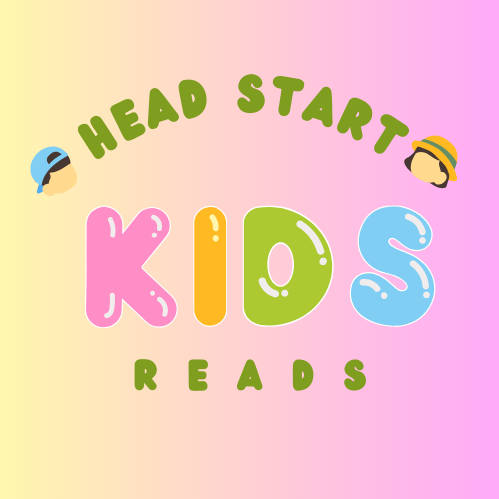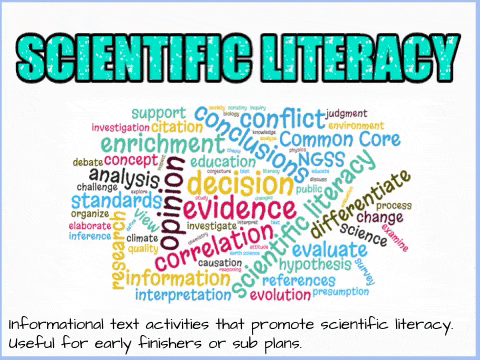Scientific literacy is not merely a set of facts to memorize; it is a dynamic and essential skill that empowers individuals to think critically, engage with the scientific process, and make informed decisions. In this article, we explore effective strategies for teaching scientific literacy, emphasizing the role of early literacy education and introducing the transformative impact of the Reading Head Start Program. Guided by the vision of Sarah Shepard, the program becomes a catalyst for fostering inquisitive minds and laying the groundwork for a future generation of scientifically literate individuals.
I. Understanding the Foundations of Scientific Literacy: A Multifaceted Skill Set
- Scientific Inquiry and Critical Thinking: Scientific literacy encompasses the ability to engage in scientific inquiry and think critically about scientific concepts. Teaching scientific literacy involves fostering a mindset of curiosity, questioning, and the application of critical thinking skills. The Reading Head Start Program, crafted by Sarah Shepard, aligns with these goals by integrating activities that stimulate inquiry and critical thought from an early age.
- Reading as the Gateway to Scientific Literacy: Early literacy forms the foundation for scientific literacy. Reading, as a skill cultivated through programs like Reading Head Start, becomes the gateway to scientific exploration. By introducing children to age-appropriate scientific literature and interactive learning experiences, the program sets the stage for a seamless transition into the world of scientific inquiry.
II. Incorporating Age-Appropriate Scientific Content:
- Curating Scientific Literature: An effective strategy for teaching scientific literacy is to curate age-appropriate scientific literature. Reading Head Start, under Sarah Shepard’s guidance, carefully selects materials that align with early learners’ cognitive abilities and captivate their interest. The program introduces scientific concepts in a way that is accessible and engaging, making the learning experience enjoyable.
- Interactive Learning in Reading Head Start: Reading Head Start employs interactive learning experiences to introduce scientific content. Through stories, games, and hands-on activities, the program creates an immersive environment where children can explore scientific concepts in a manner that aligns with their developmental stage. This interactive approach ensures that scientific literacy is not only taught but experienced.
Read Also
Reading Head Start Review | Comprehensive Review 2024
III. Promoting Hands-On Exploration: The Role of Experiments and Activities
- Experimentation in Scientific Learning: Scientific literacy is enhanced through hands-on exploration and experimentation. Teaching scientific concepts involves providing opportunities for children to engage in age-appropriate experiments. Reading Head Start integrates interactive experiments into its curriculum, allowing young learners to explore scientific principles in a playful and educational setting.
- Reading Head Start’s Experiential Approach: Sarah Shepard’s vision for Reading Head Start extends beyond traditional literacy to embrace experiential learning. The program encourages children to actively participate in experiments that correlate with the scientific content introduced. This hands-on approach fosters a deeper understanding of scientific concepts and promotes a positive attitude towards scientific exploration.
IV. Encouraging Questioning and Curiosity: A Fundamental Approach
- Fostering a Culture of Curiosity: Teaching scientific literacy involves fostering a culture of curiosity and encouraging children to ask questions. The Reading Head Start Program, inspired by Sarah Shepard’s commitment to curiosity-driven learning, actively promotes an environment where questions are welcomed and curiosity is celebrated. This approach lays the groundwork for a lifelong love for inquiry.
- Curiosity-Driven Learning in Reading Head Start: Reading Head Start’s curriculum is designed to be curiosity-driven. By incorporating stories that provoke questions, activities that encourage exploration, and discussions that celebrate curiosity, the program instills in children a natural inclination to inquire about the world around them. This approach is integral to the development of scientific literacy.
V. Connecting Scientific Concepts to Everyday Life: Making it Relevant
- Real-World Applications: Teaching scientific literacy involves connecting abstract concepts to real-world applications. Reading Head Start achieves this by introducing scientific content in relatable contexts. Whether it’s exploring the science behind everyday occurrences or understanding the relevance of scientific principles, the program ensures that learning is meaningful and applicable to daily life.
- Contextual Learning in Reading Head Start: Sarah Shepard’s approach to early literacy in Reading Head Start emphasizes contextual learning. By incorporating scientific content into stories and activities that reflect children’s daily experiences, the program makes scientific literacy relevant and accessible. This contextual approach enhances comprehension and facilitates a seamless integration of scientific knowledge into a child’s understanding.
VI. Integrating Technology: Navigating the Digital Landscape of Learning
- Embracing Educational Technology: In the digital age, teaching scientific literacy involves integrating educational technology. Reading Head Start acknowledges the importance of technology in early education and incorporates interactive online platforms that complement traditional learning methods. This blended approach prepares children for the digital landscape while fostering scientific understanding.
- Digital Literacy in Reading Head Start: Sarah Shepard’s vision for Reading Head Start includes a recognition of the role of digital literacy in modern education. The program seamlessly integrates technology to enhance the learning experience, offering interactive sessions, digital books, and engaging activities that cater to the digital literacy needs of young learners. This holistic approach prepares children for the digital aspects of scientific literacy.
VII. Parental Involvement: A Collaborative Approach to Learning
- Active Participation of Parents: Teaching scientific literacy is a collaborative effort that involves active participation from parents. Reading Head Start acknowledges the crucial role of parents in a child’s education and provides resources and guidance to involve them in the learning process. The program encourages parents to engage in scientific exploration with their children, fostering a sense of shared inquiry.
- Sarah Shepard’s Advocacy for Parental Involvement: Sarah Shepard, the visionary behind Reading Head Start, advocates for active parental involvement in a child’s education. Recognizing that learning extends beyond the classroom, the program empowers parents with the tools and knowledge needed to support their child’s scientific literacy development. This collaborative approach ensures a seamless connection between home and educational experiences.
Read Also
Conclusion:
Teaching scientific literacy is a multifaceted endeavor that requires a combination of interactive learning, hands-on exploration, and a commitment to fostering curiosity. The Reading Head Start Program, shaped by the visionary Sarah Shepard, emerges as a dynamic platform that goes beyond traditional literacy, providing a holistic approach to early education. Through age-appropriate scientific content, interactive learning experiences, and a commitment to curiosity-driven exploration, Reading Head Start becomes an instrumental tool in laying the foundation for scientific literacy. As we navigate the path of teaching scientific literacy, let us embrace the transformative potential of early education and the enduring impact it has on nurturing inquisitive minds poised for a future of scientific understanding and discovery.


[…] How Do You Teach Scientific Literacy? | Reading Head Start […]